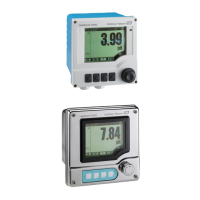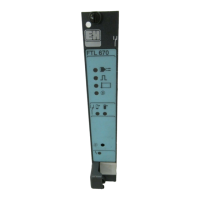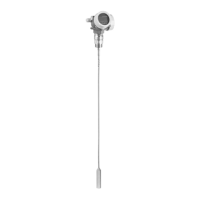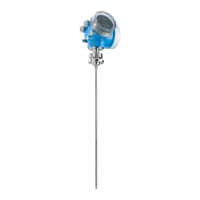Liquiline System CA80SI Operation
Endress+Hauser 71
Menu/Setup/Inputs/Current input x:y
1)
Function Options Info
Lower range value
Input mode = Parameter
-20.0 ... Upper range
value <unit of measure>
Factory setting
0.0 <engineering unit>
‣
Enter the measuring range. The lower and
upper range values are assigned to the 0 or
4 mA value and the 20 mA value
respectively. The system uses the
engineering unit which you entered
beforehand.
Upper range value
Input mode = Parameter
Lower range value to
10000.0 <engineering
unit>
Factory setting
10.0 <engineering unit>
Damping 0 to 60 s
Factory setting
0 s
The damping causes a floating average curve of
the measured values over the time specified.
1) x:y = slot no. : input number
11.4 Binary inputs and outputs
Hardware options, such as the "DIO" module with 2 digital inputs and 2 digital outputs or
fieldbus module "485" enable the following:
• Via a digital input signal
– measuring range switching for conductivity (upgrade code required, )
– switching between different calibration datasets in the case of optical sensors
– external hold (for sensors)
– a cleaning interval to be triggered (for sensors)
– measurements to be started, interruption of measuring intervals
– PID controller switch-on/switch-off, e.g. via the proximity switch of the CCA250
– the use of the input as an "analog input" for pulse-frequency modulation (PFM)
• Via a digital output signal
– diagnostic states, point level switches, "Active measurement" system state, "Sample
required" information or similar states transmitted statically (similar to a relay)
– the dynamic transmission (comparable to a non-wearing "analog output") of PFM
signals, e.g. to control dosing pumps
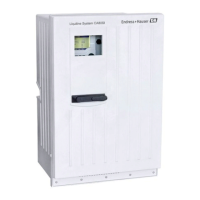
